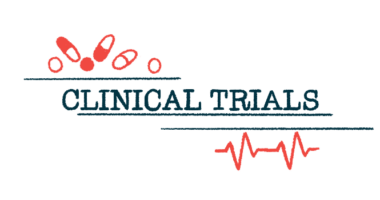CAR T-cell therapy recommended as earlier treatment line for RRMM
A decision from the FDA is expected by April 5

An advisory committee of the U.S. Food and Drug Administration (FDA) has unanimously recommended extending the approval of Janssen’s Carvykti (ciltacabtagene autoleucel) as an earlier line of treatment for adults with relapsed or refractory multiple myeloma (RRMM).
The 11 -0 vote by the Oncologic Drugs Advisory Committee was based on safety and survival data from the Phase 3 CARTITUDE-4 clinical trial (NCT04181827) that showed a favorable risk-benefit assessment for the therapy, which is available in the U.S. for adults who’ve received at least four prior lines of therapy, including a proteasome inhibitor (PI), an immunomodulatory agent (iMiD), and a CD38 inhibitor.
If the new application, which was filed in 2023, is approved, Carvykti could be used for patients who are resistant to Revlimid (lenalidomide) and have had one or more lines of therapy, including a PI and an iMiD. A decision by the FDA is expected by April 5.
“We are pleased with the advisory committee’s support for Carvykti in earlier lines of treatment based on the CARTITUDE-4 data,” said Jordan Schecter, MD, vice president and disease area leader of multiple myeloma at Janssen, now Johnson & Johnson Innovative Medicine, in a company press release. “As a physician and researcher committed to advancing patient care, the potential of CARVYKTI in earlier lines of therapy represents an important therapeutic option for patients with multiple myeloma.”
A committee of the European Medicines Agency issued a positive opinion earlier this year for the same extended indication of Carvykti, which is approved for patients who were resistant to three or more previous lines of treatment, a PI, an iMiD, and a CD38 inhibitor.
Multiple myeloma is a cancer of a type of white blood cell that produces antibodies called plasma cells, which grow out of control in bone marrow.
“Multiple myeloma is a disease with high unmet need as patients experience relapse or become refractory to treatments over time,” said Sundar Jagannath, MD, director of the center of excellence for multiple myeloma at Mount Sinai.
How does Carvykti work in multiple myeloma?
Carvykti is a CAR T-cell therapy codeveloped with Legend Biotech. It involves collecting a patient’s immune T-cells and modifying them to produce receptors on their surface, called chimeric receptors (CARs), to recognize and attack myeloma cells. These CAR T-cells are multiplied to create a sizable population and infused back into the patient, where they seek and destroy cancer cells.
“The availability of a cellular therapy … that can be used earlier in the treatment of this progressive disease is critically important, offering patients a chance of deep and durable responses with a one-time infusion,” Jagannath said.
The CARTITUDE-4 trial evaluated Carvykti’s safety and efficacy in 419 myeloma patients who were resistant to Revlimid and up to three other treatments. The participants were randomly assigned to either Carvykti or one of two standard-of-care combination treatments.
Results at nearly 1.5 years of follow-up showed it was linked to a 65% reduction in the risk of disease progression or death among patients who’d received only one previous therapy line.
Among patients overall, those treated with Carvykti had a 74% lower risk for disease progression or death than those on standard care. Moreover, a greater proportion of Carvykti-treated patients showed a complete treatment response or had no detectable cancer cells on follow-up tests.
Cytokine release syndrome, a severe inflammatory response associated with CAR T-cell therapies, was reported in about three-quarters of the patients on Carvykti, but was mild to moderate in severity for most.







